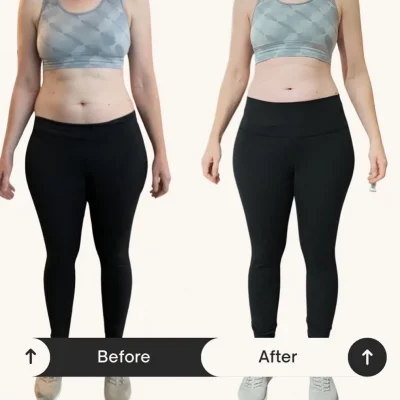Exercise is necessary for maintaining your overall health and well-being. You might wonder how much physical activity you actually need each week to reap the benefits, including improved heart health, enhanced mood, and weight control. According to health experts, aiming for at least 150 minutes of moderate-intensity aerobic exercise or 75 minutes of vigorous activity weekly can significantly improve your quality of life. Balancing exercise with adequate rest and variety is key to avoiding injuries and promoting long-term success in your fitness journey.
Key Takeaways:
- Adults should aim for at least 150 minutes of moderate-intensity aerobic activity or 75 minutes of vigorous-intensity activity each week, alongside muscle-strengthening exercises on two or more days.
- Incorporating a variety of exercises, including cardiovascular, strength training, and flexibility workouts, can enhance overall health benefits and reduce the risk of injury.
- Even small amounts of physical activity are beneficial; any movement counts, so find activities you enjoy to help build a sustainable routine.
Unpacking Recommended Guidelines for Weekly Exercise
Understanding the recommended guidelines for weekly exercise can help you tailor your fitness routine to optimize health benefits. The outlines provided by various health organizations focus on balancing aerobic and strength-training activities, catering to different fitness levels and lifestyles. Specific durations and intensities are emphasized to ensure you achieve optimal results in cardiovascular health, strength, flexibility, and overall well-being.
The Official Stance: Guidelines from WHO and CDC
The World Health Organization (WHO) and the Centers for Disease Control and Prevention (CDC) advocate for adults to engage in at least 150 minutes of moderate-intensity aerobic exercise or 75 minutes of vigorous-intensity activity each week. Additionally, they recommend incorporating muscle-strengthening activities on two or more days weekly. These guidelines are structured to enhance cardiovascular health, improve muscle strength, and reduce the risk of chronic diseases.
How Recommendations Vary for Different Populations
Exercise recommendations take into account individual health statuses, ages, and specific needs, leading to variations between populations. For instance, older adults and those with chronic conditions may be encouraged to focus on low-impact activities like walking or swimming, while younger adults might benefit from more intense workouts like running or weight training. Pregnant individuals also receive modified guidelines emphasizing moderate intensity and special considerations for safety.
For older adults, the CDC suggests not only adhering to the standard exercise recommendations but also engaging in activities that improve balance and prevent falls, highlighting the need for tailored exercises based on one’s physical capabilities. Those with disabilities or specific health concerns often require personalized programs that accommodate their unique challenges while still promoting physical activity. By understanding how these recommendations differ, you can better navigate your fitness journey and select practices most suitable for you and your circumstances.
The Science of Exercise: What Happens to Your Body?
Engaging in regular physical activity triggers a cascade of positive changes within your body. Your cardiovascular system becomes more efficient, enhancing your heart’s ability to pump blood and reducing blood pressure. Muscles strengthen and become more resilient, which improves your functional capacity in daily activities. Additionally, exercise influences your metabolic rate, boosts your immune system, and enhances bone density. Essentially, every inch of your physiology experiences some level of enhancement, contributing to a more vibrant, energetic existence.
Physical Benefits Beyond Weight Loss
Shed the notion that exercise only serves the purpose of weight management; it profoundly impacts your physical well-being in myriad ways. Regular activity improves cardiovascular health, builds muscle, and strengthens bones, resulting in increased endurance and flexibility. Your body becomes a powerhouse of efficiency, with an enhanced ability to handle daily tasks and a reduced risk of chronic diseases such as diabetes and heart disease. Exercise enriches physical capability, offering benefits that extend far beyond mere aesthetics.
Mental Health: The Psychological Perks of Regular Activity
Exercise elevates your mood and enhances mental clarity through the release of endorphins and neurotransmitters like serotonin. These natural mood lifters can reduce feelings of anxiety and depression, making regular physical activity an integral part of mental health management. Whether it’s a brisk walk or an invigorating workout, you create valuable opportunities for stress relief and emotional stability.
Studies show that individuals who incorporate exercise into their routines report higher levels of happiness and lower rates of anxiety. Engaging in activities that involve social interaction—like group classes or team sports—further enhances these benefits by building a sense of community and support. You may also find that exercise boosts your self-esteem and body image, fostering a more positive outlook on life. In essence, every workout is not just a physical commitment but a significant step toward nurturing your mental resilience.
The 150-Minute Myth: Rethinking the Numbers
The typical guideline suggesting that adults need at least 150 minutes of moderate-intensity exercise weekly can feel overwhelming or even misleading. While this recommendation serves as a baseline for general health, it doesn’t account for individual fitness levels, goals, or the benefits of higher intensity workouts. Instead of focusing strictly on minutes, think about finding a balance that suits your lifestyle and fitness aspirations. The overall goal should be to engage in activities that keep your heart rate up and enhance your well-being, rather than obsessing over clocking a specific number of minutes.
Quality vs. Quantity: The Importance of Intensity
You might find that intensity trumps duration when it comes to reaping the health benefits of exercise. Short, high-intensity workouts can be as effective—with evidence showing that even 15-30 minutes of vigorous exercise can improve cardiovascular health and muscle strength significantly. By integrating intervals, resistance training, or high-intensity workouts into your routine, you enhance calorie burn and metabolic rate, achieving better results in less time.
What Counts as Exercise? Debunking Common Misconceptions
Your daily movements may qualify as exercise more than you realize. Activities such as gardening, walking the dog, or even cleaning the house contribute to your physical activity levels. Misconceptions often suggest that only structured workouts or gym sessions ‘count,’ but a holistic view recognizes that any movement that increases your heart rate is beneficial. Embrace these everyday activities as an imperative part of your fitness journey.
Many people overlook the idea that exercise doesn’t have to be formal to be effective. Everyday tasks—such as climbing stairs, pushing a heavy cart, or engaging in recreational sports—can count toward your fitness goals. By doing activities you enjoy, the time spent moving can feel less daunting and more fulfilling. Incorporating movement into your daily routine fosters consistency and enhances your overall health, proving that exercise can be integrated into your lifestyle in diverse ways.
Real-Life Application: Crafting a Personal Fitness Plan
Building a personal fitness plan tailored to your unique goals and preferences ensures you stay motivated and committed. Start by assessing your current fitness level and identifying what you enjoy—whether it’s dancing, running, or weightlifting. Aim to incorporate a mix of cardio, strength training, and flexibility exercises each week, keeping in mind the recommended duration for each type. Document your progress, adjust your schedule as needed, and celebrate milestones to maintain enthusiasm.
Finding Your Balance: Combining Cardio, Strength, and Flexibility
Incorporating cardio, strength, and flexibility into your fitness routine is key to comprehensive wellness. Aim for at least 150 minutes of moderate aerobic activity, such as brisk walking or cycling, each week paired with strength training sessions twice a week. Don’t neglect flexibility exercises like yoga or stretching, which enhance recovery and overall mobility. Finding the right balance will help you avoid burnout and keep you engaged.
Scheduling for Success: Making Exercise Part of Your Routine
Integrating exercise into your daily life requires crafting a consistent schedule. Consider your personal commitments and preferences—some find early mornings ideal, while others prefer post-work sessions. Block out time in your calendar, just like you would for any important appointment, and treat these exercise commitments as non-negotiable. If you need to, enlist a workout buddy to increase accountability and transform your sessions into shared experiences rather than solitary tasks.
Staying active often boils down to defining a clear schedule that works for you. If your days are packed, consider breaking exercise into shorter segments, like three 10-minute walks throughout the day. Consistency will pave the way for habit formation. Create reminders on your smartphone, or set weekly goals you can track. Finding enjoyable activities that mesh seamlessly with your existing lifestyle will help you not only stick to your routine but also enjoy the journey as you progress toward your fitness objectives.
Common Barriers to Exercise: Identifying and Overcoming Obstacles
Identifying barriers to exercise is the first step in making sustainable changes to your fitness routine. Many people face obstacles such as lack of time, motivation, or access to facilities. By understanding and addressing these challenges, you can create strategies that fit your lifestyle and help you stay committed to your fitness goals.
Time Management: Prioritizing Fitness in a Busy Lifestyle
Finding time for exercise can feel impossible amid work, family, and social commitments. You might consider scheduling workouts like appointments or breaking sessions into smaller, manageable chunks throughout the day. Investing just 30 minutes a few times a week can have significant benefits, making it vital to regularly include fitness in your daily agenda.
Motivation Matters: Building Consistency and Staying Engaged
Staying motivated can be a challenge when juggling various responsibilities. Setting small, achievable goals helps create a sense of accomplishment that can propel you forward. Engaging in activities you enjoy and mixing up your routine can also combat boredom, keeping you interested and invested in your fitness journey.
Maintaining motivation over time often involves surrounding yourself with support and positivity. Involving friends or family in your workouts can turn exercise into a social activity, adding an extra layer of enjoyment. Tracking progress through apps or journals provides tangible evidence of your achievements, reinforcing your commitment. Remember to celebrate milestones, no matter how small; these celebrations can serve as powerful motivation to keep you moving forward.
Final Words
To wrap up, finding the right amount of exercise for you may depend on your personal health goals and lifestyle. The general recommendation is at least 150 minutes of moderate aerobic activity or 75 minutes of vigorous activity each week, complemented by strength training on two or more days. Adjust these guidelines based on your fitness level, preferences, and any specific health considerations. By prioritizing regular physical activity, you can enhance your overall well-being and maintain a balanced lifestyle that fits your needs.
Q: How much exercise should I aim for each week to maintain overall health?
A: For maintaining overall health, it is generally recommended that adults engage in at least 150 minutes of moderate-intensity aerobic activity or 75 minutes of vigorous-intensity activity each week. This can be broken down into sessions of at least 10 minutes. In addition to aerobic exercise, incorporating strength training activities for all major muscle groups on two or more days a week is also advisable. This approach not only helps in managing weight but also enhances cardiovascular fitness, muscle strength, and overall well-being.
Q: Is it better to spread my exercise throughout the week or do it all in one day?
A: Spreading your exercise throughout the week is often more beneficial for both physical and mental health. Engaging in regular, shorter bouts of exercise can lead to long-term adherence to an active lifestyle, while reducing fatigue and the risk of injury. However, if your schedule only allows for longer workouts on certain days, you can still reap health benefits. The key is to find a routine that fits into your lifestyle and that you enjoy, making it easier to stay consistent.
Q: What types of exercises should I include for a well-rounded routine?
A: A well-rounded exercise routine should include a mix of aerobic activities, strength training, flexibility exercises, and balance training. Aerobic activities could include walking, running, cycling, or swimming, while strength training might involve weights, resistance bands, or body-weight exercises like push-ups and squats. Flexibility exercises, such as stretching or yoga, help improve range of motion, while balance exercises are important, especially for older adults, to prevent falls. Including a variety of these types will ensure a comprehensive fitness regimen that addresses different aspects of health and fitness.










































